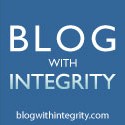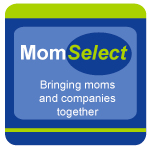 It's not something I talk about much--ever, really--but I live with a chronic pain condition. I doubt most people in my real life notice how it affects me in ways both small and large. But because it was likely caused in part by environmental factors, I'm daily reminded of the long-term effects of our increasingly toxic world.
It's not something I talk about much--ever, really--but I live with a chronic pain condition. I doubt most people in my real life notice how it affects me in ways both small and large. But because it was likely caused in part by environmental factors, I'm daily reminded of the long-term effects of our increasingly toxic world.
I was raised a basic-level environmentalist in the recycling/conservation sort of ways. But my diagnosis and the havoc it wreaked with my fertility made me determined to go further to create a safer environment in our home once I became a parent. Doubly so now that I have a daughter, who I hope will grow into a strong, healthy woman. How do I give her the best chance of escaping some of the issues I've faced?
I've been piecing together research and making incremental changes since Puppy was born, mostly in some of the easier areas: cloth diapering, using safer cleaning products, reducing certain types of plastics, using no-VOC paint, selectively buying organic food items. But I've really wanted a more comprehensive approach to what we can do to reduce our exposure to environmental toxins.
Enter Healthy Child Healthy World: Creating a Cleaner, Greener, Safer Home by Christopher Gavigan, CEO of the non-profit advocacy group Healthy Child Healthy World (formerly CHEC).The book is broken down into specific areas (pregnancy, cleaning, food, beauty products, children's products, yards, water/air, pets, home improvement, activism). Each chapter discusses potentially harmful chemicals and contaminants and suggests ten practical steps you can take to make your home safer.
Written in an accessible, sound-bite style, the book is a fast read. Gavigan is determined to keep readers from feeling too overwhelmed, so doesn't spend much time on the research behind the suggestions. He breaks things down into achievable steps and offers alternatives when the best practice (like buying all organic kids' clothing) will probably be too expensive for most. The separate tips that seemed to pop up on every other page were a little distracting, but usually useful. My favorites were some of the "recipes" sprinkled throughout for everything from homemade air freshener to finger paint. There are also some good checklists designed to be copied and cut out as quick references for things like natural cleaning options or which produce is best to buy organic.
Much of the information I had seen elsewhere (a lot of it at the Healthy Child website). But it also highlighted some areas I hadn't yet considered (like simple steps to improve the air quality inside our home). T and I started talking last night about some of the suggestions for keeping our yard chemical-free. And I've already found myself using some of the tips, like the one for remembering which plastics are safer. I like having it all in one book I can pull off the shelf whenever I have a question, like the child rearing books I reference when my kid comes down with a rash or runs a fever. Having read through it once I definitely see myself coming back to certain sections as I make purchasing decisions. If the mark of this book's success is how much it is used in the reader's daily life, then it's off to a good start in our house.
The book is full of testimonials from celebrity parents about how they've replaced their carpets with bamboo flooring and give organic crib mattresses to all their friends. They're touted on the cover and I think they're supposed to engage readers, but frankly they annoyed me. They broke up the flow of the text and after awhile I realized I'd process the core content of the book better if I just skipped them. I like reading People magazine as much as the next person, but I'm not about to look to random celebrities for advice. I would have much rather seen profiles of regular folks from a variety of economic backgrounds. What choices do different families living on a budget make, how do they prioritize? Also, the frequent mentions of certain brands and the shopping guide in the back--although useful for finding green products--made me wonder about possible product placement. But both that and the celebrities can be fairly easily ignored.
Don't expect an in-depth look at the research about environmental toxins, although this book does point to some websites and books where you can find that information. But if--like me--you're already convinced about the dangers and want a comprehensive look at practical steps you can take at the household level, Healthy Child Healthy World is an excellent place to start.
This review is part of a Mother Talk blog tour. Head there to read what other bloggers thought of this book.
 t they can be leaky, smelly, and pile up quickly in the trash. A better solution is wetbag: a washable, waterproof bag. If you ask me, one of the best wetbags out there is the Happy Tushies Wonderbag. It has two separate waterproof sections, so you can stash clean diapers and wipes on one side and dirties on the other. Once zipped shut, it keeps out all leaks, dampness and odors until you're safely at home. We've even stored diapers in it during a weekend trip and the waterproof lining never failed.
t they can be leaky, smelly, and pile up quickly in the trash. A better solution is wetbag: a washable, waterproof bag. If you ask me, one of the best wetbags out there is the Happy Tushies Wonderbag. It has two separate waterproof sections, so you can stash clean diapers and wipes on one side and dirties on the other. Once zipped shut, it keeps out all leaks, dampness and odors until you're safely at home. We've even stored diapers in it during a weekend trip and the waterproof lining never failed.








